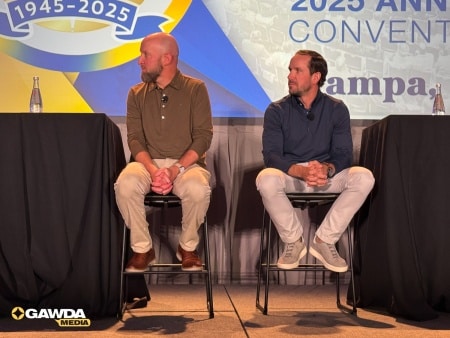PHMSA ISSUES ADVANCE PROPOSED RULE TO REVISE HAZMAT REGULATIONS
The Pipeline and Hazardous Material Safety Administration of DOT has issued an Advance Notice of Proposed Rulemaking on 46 different topics to “modernize” the Hazardous Materials Regulations. Public comments on the notice are due October 3, 2023. The comments to the ANPRM might be used to develop a number of proposed rulemakings.
Several of the items are of particular interest to GAWDA members, including the following.
- Should Emergency Response Information be required to accompany shipments of hazardous materials? If not, what alternatives should be considered that maintain existing levels of safety (e.g., having emergency responders able to access the Emergency Response Guidebook)?
- Filing a request to renew special permits and approvals at least 60 days before the expiration date currently means the permit or approval remains in effect until the agency acts on the renewal application. Should PHMSA eliminate the 60-day requirement and allow the permits or approvals to remain in effect if a petition for renewal is filed any time before the expiration date?
- Filing a request to renew special permits and approvals at least 60 days before the expiration date currently means the permit or approval remains in effect until the agency acts on the renewal application. Should PHMSA eliminate the 60-day requirement and allow the permits or approvals to remain in effect if a petition for renewal is filed any time before the expiration date?
- Should PHMSA revise the protocols under which it incorporates by reference industry standards (such as CGA documents) into the HMR?
- MC–331 cargo tank motor vehicles, typically used to transport compressed gases, are required to be painted a white, aluminum, or similar reflecting color on the upper two-thirds of the area of the cargo tank, unless insulated or covered by a jacket made of aluminum, stainless steel, or other bright non-tarnishing metal. Should PHMSA create a reflectivity performance standard for wrapped or painted MC–331 cargo tank motor vehicles to replace or in addition to the current requirement?
APPEALS COURT STRIKES DOWN EPA BAN ON NON-REFILLABLE REFRIGERANT CYLINDERS
The U.S. Court of Appeals of the District of Columbia Circuit has struck down the Environmental Protection Agency’s 2021 ban on the use of non-refillable refrigerant cylinders. The three-judge panel of the court held that EPA lacked sufficient statutory authority and ordered that the ban be vacated.
In 2020, Congress passed the American Innovation and Manufacturing Act to phase out hydrofluorocarbons, or HFCs, which are harmful greenhouse gases. The Act directs the EPA to issue a final rule phasing down HFCs through an allowance allocation and trading program. The Act provides the outline for how that program will work but left the agency to fill in the details.
The statute provides that the EPA must first calculate the baseline levels of HFC production and consumption in the United States. The agency then caps maximum annual HFC production and consumption at a percentage of those baselines — for instance, ninety percent in 2023. Over time, the caps come down, eventually reaching fifteen percent in 2036.
To ensure that production and consumption stay under the respective caps, the Act puts in place a system of allowances, which is like a license; without one, no one may produce or consume HFCs. Allowances are initially distributed to HFC users by the EPA. Once allocated, HFC users may buy and sell allowances from one another to adjust their production or consumption capacity. The total number of allowances in circulation corresponds to the current HFC production or consumption cap.
In late 2022, EPA issued its final Phasedown Rule implementing the cap-and-trade program. The rule was challenged in court by several trade associations and Worthington Cylinders. The petitioners set out three arguments: (1) that Congress did not grant EPA authority to regulate HFCs within blends of HFCs and other chemicals; (2) Congress impermissibly delegated legislative power to the EPA by giving it unguided discretion to distribute HFC allowances; and (3) Congress did not give EPA authority to impose regulations mandating the use of refillable cylinders to transport HFCs (thus banning the disposable cylinders currently used by the HVAC industry), or requiring that users affix QR codes to the HFC containers.
The court rejected the first two arguments but accepted the third and struck down the ban on non-refillable cylinders and the QR code requirement. The court held that the EPA did not identify any provision of the AIM Act giving it the authority to require refillable cylinders or a QR-code tracking system.
The court noted the refillable cylinder rule would impose between $441 million and $2 billion in costs on the regulated industry, and said it is unlikely that Congress would have granted the agency authority to pass a rule of that magnitude in a provision of the statute that says nothing about complementary measures, refillable cylinders, or QR Codes. The decision was based on a principle of statutory construction that Congress does not alter the fundamental details of a regulatory scheme in vague terms or ancillary provisions.
The EPA may still request rehearing of the case in the court of appeals or ask the Supreme Court for review.




